The 17th century has been called the Dutch Century. In this “Dutch Golden Age,” the Netherlands achieved global success in trade, science and technology, warfare and art, and it became a colonial power with a reach that even extended as far as Taiwan.
The Netherlands at the time was a commercially prosperous country, and paintings depicting scenes of city life, or still life paintings to adorn people’s walls, were very much in demand. Although stylistically influenced by the Protestantism that emerged after the Reformation, Dutch art was far less ostentatious and far simpler than the Baroque style found elsewhere in Europe.
Rembrandt Van Rijn (1606-1669) obtained the majority of his income, and much of his renown, from his depictions of Biblical stories and his portraiture.
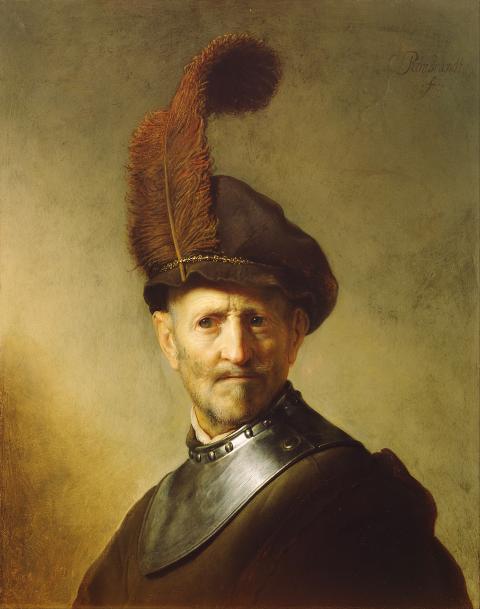
Photo: Wikimedia commons
圖片:維基共享資源
His technique was very much influenced by Italian Baroque art, particularly Caravaggio’s chiaroscuro technique, but he was far less preoccupied with the beauty of Italian art, and in fact did little to conceal flaws.
Around one-tenth of Rembrandt’s extant works are self portraits. These include oil paintings, etchings and sketches. The painter scrutinized his own visage from when he was a young man in his twenties to the final year of his life. The young Rembrandt shows a man in his prime; the older Rembrandt was painted at a time when he was bankrupt and his loved ones had passed away. The self-portraits, spanning over 40 years of his painting career, show us how he accumulated his own visual diary, depicting himself with utmost candor and profundity.
He would often apply deep shadow tones to the canvas, and then complement them with similarly dramatic highlights to small areas of detail, such as on the face, to create a strong contrast between light and shadow reminiscent of dramatic stage lighting. The extreme shadows made the areas of light shimmer, to great theatrical effect.
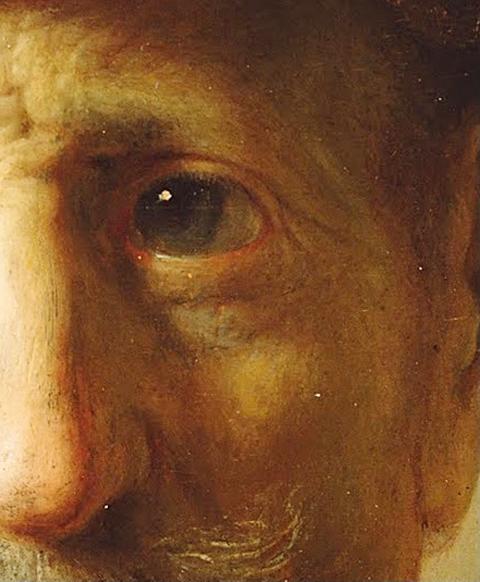
Photo: Wikimedia commons
圖片:維基共享資源
Modern photography and movie making techniques have also been influenced by the artist: “Rembrandt lighting,” for example, is named after him. This refers to a lighting technique Rembrandt himself made liberal use of, and which would typically create a triangle of light on the face (see picture 2). With this lighting arrangement, the shadows of the nose and the cheeks would merge and, more importantly, the eye on the shaded side of the face would retain its specular highlight. This would mean that the eye would still appear bright and expressive, enhancing the dramatic effect of the picture.
(Translated by Paul Cooper)
史上常言十七世紀是荷蘭的世紀,在這「荷蘭的黃金時代」,荷蘭的貿易、科技、軍事、藝術都有引領世界的成就,其海外拓殖勢力也遠及台灣。
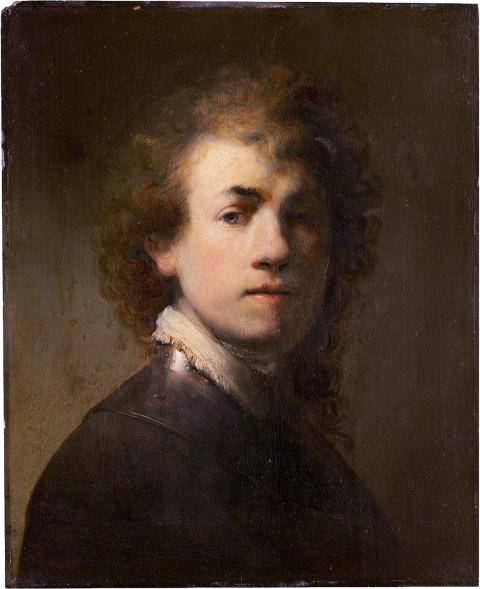
Photo: Wikimedia commons
圖片:維基共享資源
當時,荷蘭由於商業發達,描繪市民生活與作為裝飾用的靜物畫因市場需求而成為主流;另外,因宗教改革後新教的影響,即便是描繪宗教主題,荷蘭藝術相較於巴洛克的華麗也較為樸實。
林布蘭(一六○六-一六六九年)當時便以宗教故事畫及肖像畫為主要收入來源,並享有盛名。
林布蘭的技法受前代義大利巴洛克藝術影響,尤其是卡瓦拉喬的明暗對照法,但不同於義大利藝術的美麗形象,他似乎毫不關心美,甚至對醜陋毫不掩飾。
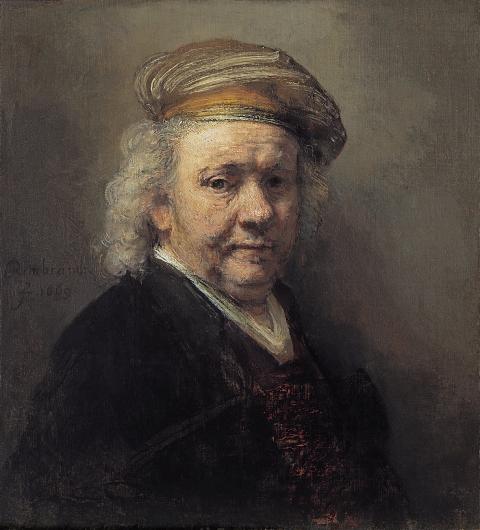
Photo: Wikimedia commons
圖片:維基共享資源
林布蘭傳世的作品中,約有十分之一為其自畫像,包括油畫、蝕刻版畫與素描。由二十出頭的青年到生命最後的一年,畫家凝視著自己。儘管少年得志,但他晚年破產、親人離世,由他橫貫四十多年的自畫像中,我們彷彿可以閱讀他誠實、深邃地面對和挖掘自己的生命日記。
林布蘭的畫面處理常以灰暗為基調,而在臉部等小部分特寫處以相對極明亮的光線處理,這種明暗對比手法像是舞台打光;極度的暗,讓小區域的光變得炫目,營造了場面的戲劇張力。
現代攝影與電影技巧也受到林布蘭影響,「林布蘭光」即以他為名。這是他常用的佈光手法,臉上的三角形光即為典型(如圖二)。在這樣的佈光中,鼻子與臉頰的影子相連,更重要的是,陰影中的眼睛依然有眼神光,以保持炯炯有神的面貌,使照片有戲劇感。
(台北時報林俐凱)
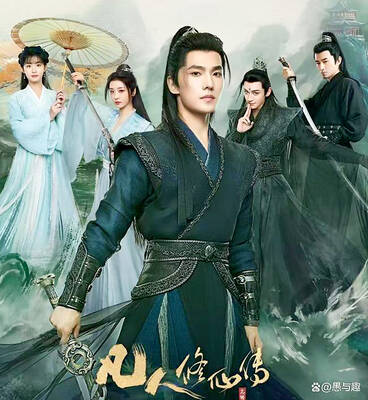
A: Apart from megahit “KPop Demon Hunters,” what else is worth watching? B: The new shows featuring four top-tier actors – Xiao Zhan, Wang Yibo, Yang Yang and Li Xian — are all popular. A: Yang’s TV drama, “The Immortal Ascension,” is definitely one of the summer sizzlers. Some praise it as the Eastern edition of the glorious “Harry Potter” series. B: Yeah, the costume fantasy drama is about a young man’s journey to immortality. All the magic powers and magical tools in the show are just stunning. A: Let me go stream it now. I wanna

A: Wow, animated fantasy film “KPop Demon Hunters” (KDH) has become Netflix’s most viewed film ever. B: Isn’t that the movie about a K-pop girl group secretly serving as demon hunters? A: Yeah, and its theme song “Golden” was No. 1 on the Billboard chart. B: The hit performed by HUNTR/X — the girl group from KDH — has inspired a “Golden challenge,” as celebrities are racing to cover its sky-high notes. A: Cool, let’s try it out. A: 哇,動畫電影《KPop獵魔女團》近日已成為網飛上觀看次數最多的電影。 B: 這部電影不是關於某韓流女團,成員秘密擔任惡魔獵人的故事? A: 對,主題曲《Golden》更勇奪告示牌單曲榜冠軍呢! B: 該曲由電影中的女團「HUNTR/X」所演唱,甚至還掀起一股全球《Golden》大挑戰︰一堆名人挑戰翻唱該曲飆高音。 A: 酷喔我們也來挑戰吧。(By Eddy Chang, Taipei Times/台北時報張迪)

An automated human washing machine was one of the highlights at the Osaka Kansai Expo, giving visitors a glimpse into the future of personal hygiene technology. As part of the event, 1,000 randomly selected visitors were given the chance to try out this cleansing system. The machine operates as a capsule-like chamber where warm water filled with microscopic bubbles gently washes away dirt. The 15-minute process also includes a drying phase, removing the need for users to dry themselves manually. Equipped with advanced sensors, the device monitors the user’s biological data, such as their pulse, to adjust water temperature and other settings

Firefighters might face an increased risk of developing “glioma,” a type of brain cancer, due to certain chemicals encountered on the job. A recent study analyzed glioma cases and found clear connections between the genetic patterns of affected firefighters and their exposure to these harmful substances. The study found that firefighters exhibited significantly higher levels of specific mutational signatures in their glioma cells compared to individuals in other occupations. These signatures — unique patterns of genetic changes in DNA — help scientists trace the source of mutations. Earlier research has associated these mutations with certain chemicals found in fire